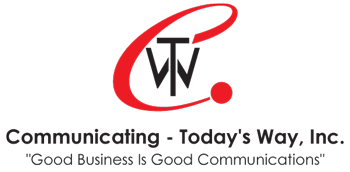The Importance Of Being In-Sync
Good communications are insync! It’s a term that is sometimes tossed around lightly, i.e. “insync” or “out of sync” … but it’s a term that has so much significance for successful communications. Just as the above image depicts, when our communications are insync, all flows through each layer, from beginning to end, with a successful connection. Should a disconnect occur anywhere within the flow, from beginning to end, the end result is one of confusion. The connection falls out of sync and the true meaning of the communication is not understood.
Just like our with our computers, a disconnect can happen anywhere between the beginning and the ending of each communication. Probably the worse place to have the disconnect is at the very beginning! If It happens there, the chances of a successful communication is really slim to of course, none! And, I believe we all know the results of “getting off on the wrong foot” in a conversation? That can be considered a disconnect at the very beginning.
As odd as it may seem, many conversations, written and spoken, get started off on the wrong foot. It’s just so easy to create what we want to say from our own mindset and emotions, send it off and upon its arrival at its destination, the receiver listens/reads from their own mindset, emotions, and opinions. Disconnect!!
Here are 6 tips for beginning your communications insync and on the same page:
- Set The Stage: This means that you state the topic of your communications up front, like in an announcement. Example: “Regarding last week’s proposal request.” You have set the stage. Your recipients all take their minds to last week’s proposal and are waiting for your next words!
- Get Agreement: It can be as simple as asking for agreement to be insync. Example: “Before I begin, can we confirm we are agree that _____.” Or, “Before I begin, can we confirm agreement that we need to hire new employees next week?” When getting agreement you are getting everyone “specifically” on the same page with you.
- Ask A Question: Example: “Do you know what the capital of Nebraska is? The reason I ask is ……. “ Asking a question brings people in to the topic you want to address. People are naturally curious and usually want to try to answer questions so its a way to harness their attention and continue from that point!
- Take Them To Where You Want Them To Be: Example: “Picture This! A beautiful lake with a boat at the dock waiting for you.” Using this technique you have taken their minds to where you want them to be. It’s a good technique for help with getting emotions insync as well!!!
- Tell A Story: Similar to the last technique you can begin with, “Let me tell you a story.” People of all ages, young to old, enjoy listening to stories. The story puts everyone on the same page.
- Silence: This works for “live” communications only. Pause before you begin to speak. In front of a group and 1-on-1. People eventually all quiet down and wait! Silence is very powerful. It can be annoying 1-on-1, so use it in good taste. Its success lies within your communications when you do begin to speak … but at least you have everyone’s attention up front!
The more you can focus on being in sync with the recipients of your communications right from your very first words, written or spoken, the more you will pay attention that you are remaining insync throughout the communication. Think we all know how good the feeling of “right on” is? High-five material? That’s what you are going to be feeling when all your communications are flowing insync!
#communicationsstrong
Here’s to your communications success ….
margie






FREE GIFT!
310-306-1453